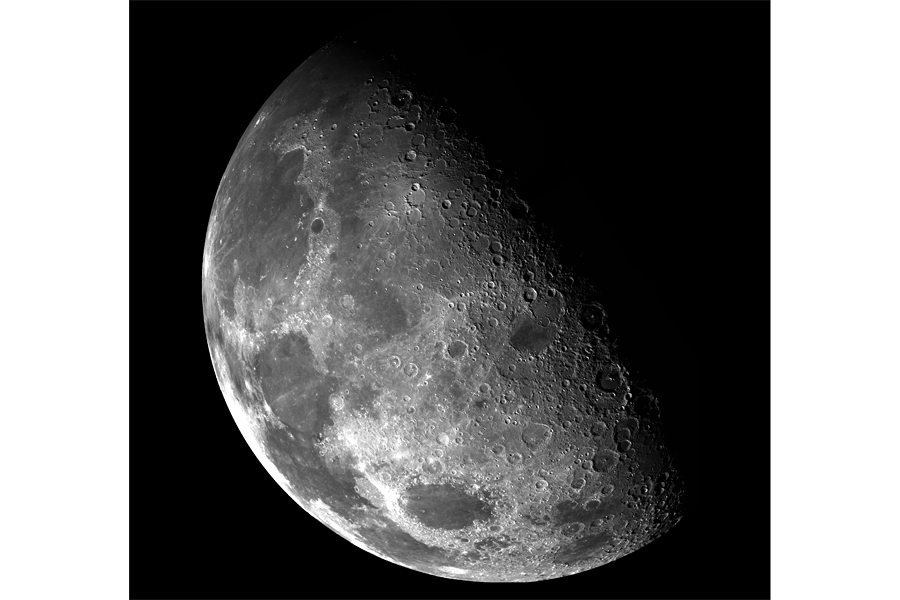Did the moon once contain a dynamo?
Loading...
From a terrestrial view, our moon often looks like an inert ball of listlessness. But there is a lot more going on under the surface – or at least there once was. New research suggests that, billions of years ago, the moon's core was home to circulating currents of electromagnetic energy.
Scientists have known for decades that the samples of lunar rock and crust retrieved by the Apollo missions show signs of having once been acted on by a magnetic field. But today, the moon doesn't have a magnetic field. A compass, for instance, would be of little use there.
So scientists were puzzled. What magnetized the rocks? We know it wasn't the Earth, as our magnetic field extends only about a quarter of the way to the moon.
Some thought that the rocks were magnetized by plasma formed by tremendous meteor impacts. Others though that, long ago, churning electrically conductive material inside the moon created a lunar dynamo.
Now, after decades of back and forth between the competing explanations, a duo of scientists have supplied strong evidence for the dynamo hypothesis.
Benjamin Weiss, MIT associate professor and co-author of the new study, told the Monitor that scientists investigating the issue in the past had no simple way of figuring out which one was right.
"How do you tell for the magnetic field, even if you know its strength, what produced it?" says Weiss.
One major problem was that the samples Apollo astronauts were bringing back were often fragmented. As a result, scientists were not always getting meaningful information because they didn't know the original orientation of the pieces in relation to each other.
So Weiss and Sonia Tikoo of University of California, Berkeley, looked at smaller, simpler rock samples. With modern analytical techniques, they could then more easily extract information like when the rocks formed, how slowly they cooled, and their relative orientations. And during their research, the team found that associations between cosmic impacts and lunar surface magnetism, instances that had formerly kept the dynamo model from winning the day, might instead be explained by contamination from a single impact.
If the lunar dynamo theory is true, scientists could more confidently classify the moon as a highly differentiated object, one that consists of a number of layers with distinct compositions and densities, similar to the planets in our solar system, as opposed to a ball of rubble that accreted over time and was captured by Earth.
But it also raises a slew of new questions. If there really was a lunar dynamo, how did it come to be? How did it work? How long did it last? And why did it stop?
Despite improvements in techniques for studying the age and origin of magnetic lunar rocks, answering these questions will not be simple. Weiss's team must determine what kind of mechanism could account for a number of findings: the vast range of magnetic intensities found in lunar rock samples, the dynamo's long life, and its abrupt and rapid decline in magnetic intensity at some point. There are models that can address some of these questions, but nothing fits perfectly yet.
"There are only a few sources that seem to be able to power the dynamo late in its history," Weiss says.
Those possibilities include what is known as core crystallization, where the core solidifies due to an abundance of sulfur, and a process called precession in which the mantle layer and core rotate about different axes, thereby producing energy. Similar to the initial debate over the origin of the moon's magnetic field, scientists have found evidence for both sources.
Weiss says pinning down the timing of one event in particular may provide some answers, and that is the end of the dynamo's life.
"The obvious next step is to figure out when the dynamo turned off," says Weiss. "And that's not so easy."
"The lunar dynamo" appeared Thursday in the journal Science.






